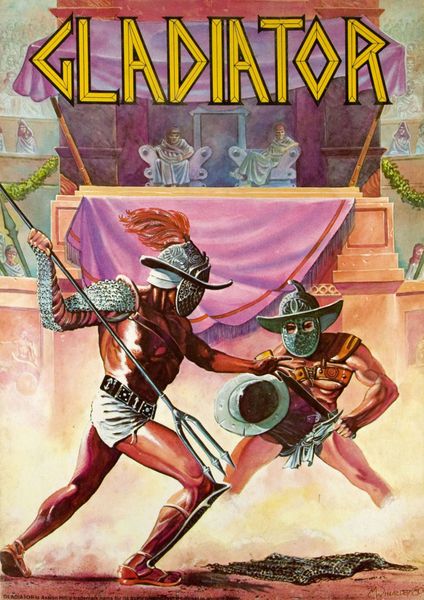Gladiator (1981) Board Game
Gladiator is a board game released in 1981, designed by Cathy Chastain, Dale Scheaffer, and Mark Wheatley. It falls under the categories of Ancient, Economic, Fighting, and Wargame. The game is designed for 2-6 players, with a runtime of 15-30 minutes and recommended for players aged 14 and above. The game includes mechanisms such as Action Queue, Critical Hits and Failures, Dice Rolling, Grid Movement, and Hexagon Grid.
Game Components of Gladiator
How To Setup Gladiator
To set up the game, players need to prepare the arena board, distribute the gladiatorial figures, and familiarize themselves with the combat charts and tables. Each player selects their gladiator and equips them according to the rules. The setup process is straightforward, ensuring a quick transition into the gameplay.
Gameplay Mechanics and Game Objective
Player Experience
Playing Gladiator involves a mix of strategic planning and luck. Players must maneuver their gladiators effectively around the arena, using the combat mechanics to outmaneuver their opponents. The game requires a balance of risk and caution, making it engaging and challenging.
Pros
Cons
Personal Thoughts on Gladiator
Gladiator is a game that will appeal to those who enjoy historical themes and strategic combat. It is particularly suited for players who appreciate classic board games and are looking for a nostalgic gaming experience. However, players seeking more complex or modern game mechanics might find it less engaging. Despite its age, Gladiator remains a fascinating glimpse into the world of ancient gladiatorial combat, offering a unique and enjoyable gaming experience.
We are supported by our audience. When you purchase through links on our site, we may earn an affiliate commission, at no extra cost for you. Learn more.

